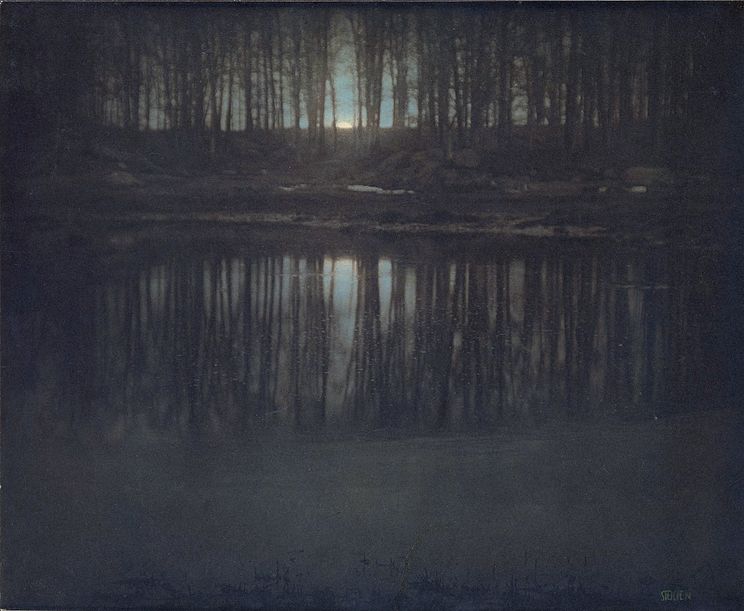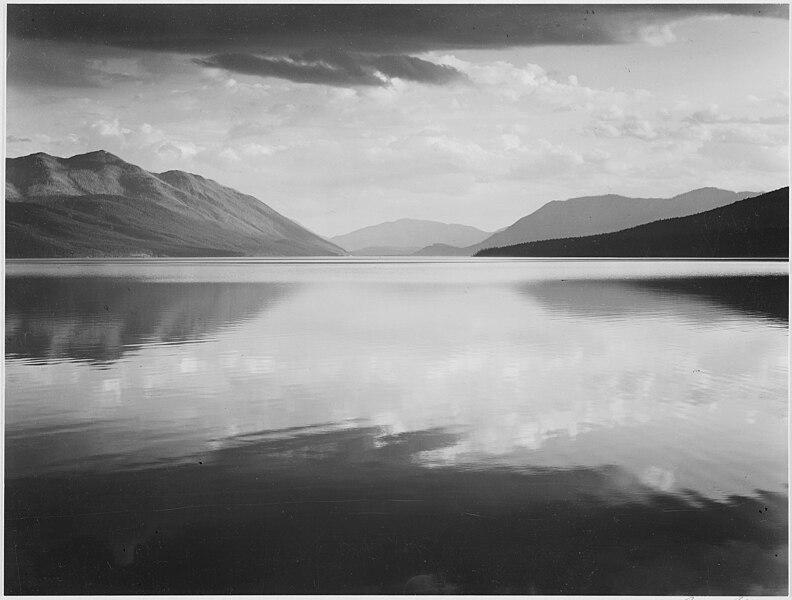Edward Curtis
Edward Curtis is most known for his photographs of Native Americans and the American old West. He built his own camera when he first became interested in photography and used it for quite some time before purchasing a professional camera. He started his own studio with a few of his close friends/colleagues.President Theodore Roosevelt invited him to photograph his children after he saw that Curtis won a photo contest. He had many studios in his lifetime, he left his first one and started a new partnership with someone else and soon left that one for his own self appointed studio in California. The photographs he is most known for taking are portrait style photographs of Native Americans.



This photo called "A Smokey Day at the Sugar Bowl" is my favorite photo by Edward Curtis. It's different from the photos he usually takes, its not a straightforward portrait, it's a beautiful scenic photo. It still sticks to his style of the old west and Native Americans because of the Native standing by the river. I think this gives the photo and even better effect because of the man standing and looking off into the distance, it gives the photo an eerie effect, but not in a creepy way, more like a cold feeling like you are actually there in the early morning fog on the river.

This is defiantly one of my favorite photos by Curtis.The view in the photo is astonishing and the men on horseback add to the effect of the vast empty space that the old west was. Whenever you watch movies where the setting is the Old West you almost always have a shot like this. When you think Old West in your head the image of horseback riders and a tall canyon immediately comes to mind.

This is an original portrait called "White Man Runs Him" by Edward Curtis. This is a typical straightforward portrait that Curtis was known for taking. I like portraits because they show the true person in the photo, no interpretation. It's just a person, facing the camera and being this close to the camera they can't hide anything. The camera reveals them and that's what I like. There is no smoke and mirrors, everything is legitimate.
Gertrude Kasebier




This is an original portrait called "White Man Runs Him" by Edward Curtis. This is a typical straightforward portrait that Curtis was known for taking. I like portraits because they show the true person in the photo, no interpretation. It's just a person, facing the camera and being this close to the camera they can't hide anything. The camera reveals them and that's what I like. There is no smoke and mirrors, everything is legitimate.
Gertrude Kasebier
Gertrude Kasebier was an American photographer who shocked the world with her amazing pictures of motherhood, Native Americans and her fierce belief that woman could take beautiful photographs. Her unhappy marriage inspired some of her most famous masterpieces. She believed that photography was made for women with artistic taste and made it one of her most important goals, to make sure that every women would be able to be a photographer if they wanted to.

This is a photo taken by Gertrude Kasebier titled "Miss N" and it is one of my favorites. There is a mysterious quality to this photograph that one simply cannot put their finger on. It's because of the look on Miss N's face that Kasebier captured; it can be interpreted many different ways. One could say that she was told a joke and smiled slightly, or maybe she's thinking a bittersweet memory, the reason behind the sadness in her eyes. That's what makes a photo great, the story it creates.

This photo called "Blessed Thou Art" has a chilling quality about it. The way the child looks, dressed all in black when everything around is white and bright. Perhaps the reason the child is seen as a darker figure is because Kasebier did not like her husband, and felt the children were a piece of him. She constantly stresses the bond between mother and child so maybe the picture shows that even though the child has a bit of evil in it, it is still her child and she still loves her.

Once again in this picture "The Clarence White Family in Maine" the mother and children are seen to have a noticeable connection. In the white light the mother looks almost like a holy figure and the boys are entranced by her. Kasebier was very influenced by the connection that a mother has with her children and this shows in many of her photographs including this one.





































